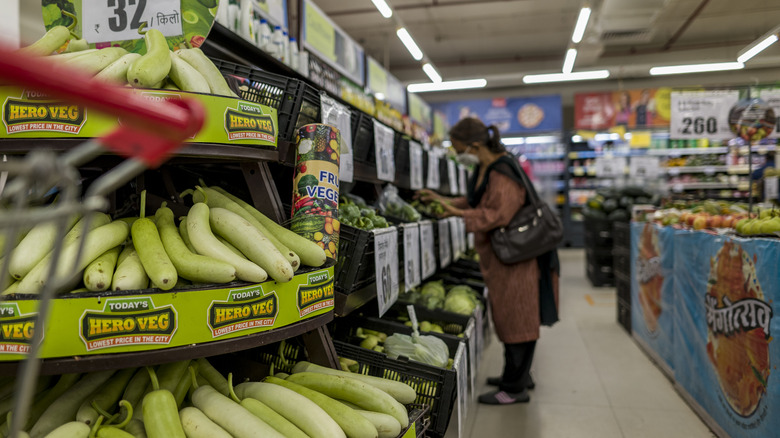Why Asia May Be About To Experience The Worst Of Food Inflation
Until recently, Asian countries seemed spared of the inflation that was causing food prices to rise in Europe and the United States. Now, though, it has begun to be felt.
The Japanese financial holding company Nomura Holdings Inc. noted in a report published in June that the annual inflation in food prices in Asian countries besides Japan had risen from 2.7% in December to 5.9% in May (per Bloomberg). Worse, these increases are expected to increase in the second half of the year. Nomura estimates that Singapore will see food inflation reach 8.2% while India would exceed even that with 9.1%.
Sonal Varma, Nomura's chief economist for India and Asia (ex-Japan), explained to CNBC that global trends in food prices tend to occur later in Asia. This is due to governments instinct to ease food pressures by either subsidizing the industry or enacting price controls. Varma's recommendation was for governments to support lower income groups as "lower-income households typically spend a big chunk of their consumption on food, so it's more important to protect them."
The World Economic Forum offered in January more concrete reasons for why inflation had yet to take hold in Asia. Namely, India saw a good harvest, China's hog population was growing, and rice prices were contained. Similarly, Bloomberg reports that Nomura has found the price of rice to still be stable due to there being a large stock. However, if everyone turns to rice as a means to avoid wheat prices, that cost can jump as well.
The culprits are the same as ever
There are general reasons for why it took so long for countries like China to feel the pang of inflated food prices. However, the reasons for why they are feeling them are the same or very similar as everywhere else.
While noting that food prices have dropped somewhat in Europe and the U.S., the United Nations Food and Agriculture Organization cautioned against overconfidence because, as CNBC quotes, "Factors that drove global prices high in the first place are still at play." These include continued fallout from COVID-19's disruption of global supply chains, climate change's impact on harvests, and the war in Ukraine. Time credits the last as the latter cause for inflation to begin in Asia. Specifically, the warfare has disrupted supply chains for fuel and fertilizer even more and put the international wheat market into disarray.
Even outside Asia, where food prices have dropped, they remain high compared to previous years. So, it's the same as it ever was. It's just that Asian countries are beginning to feel it acutely.

